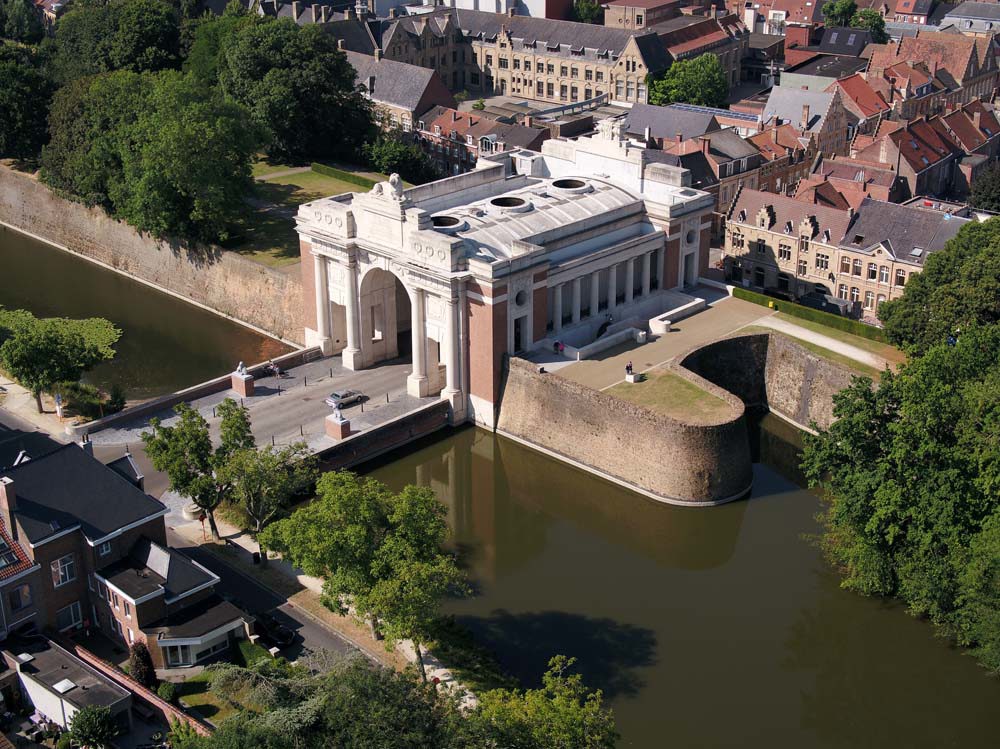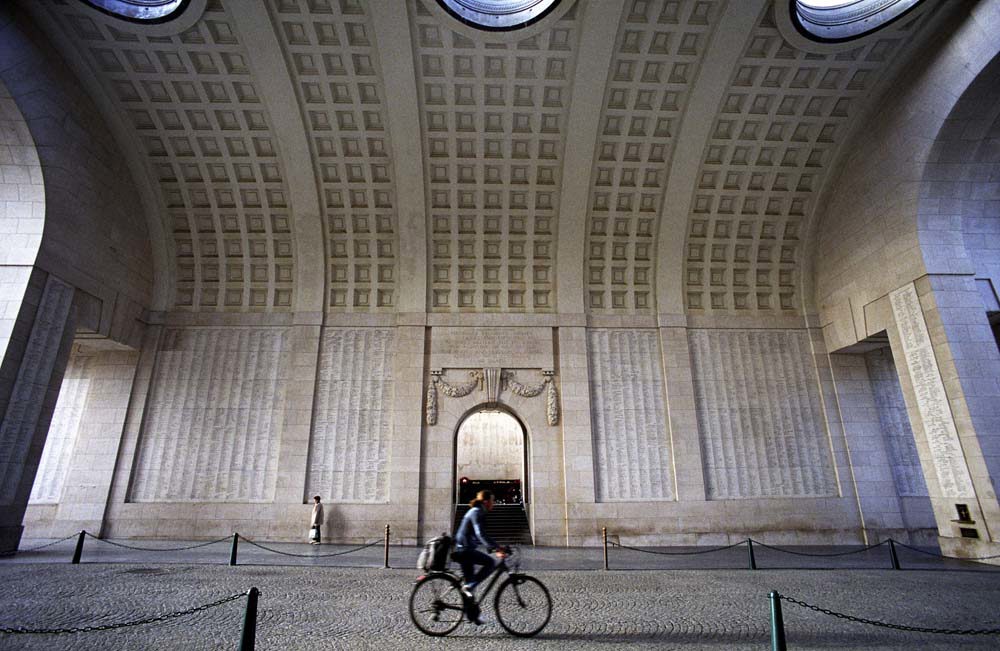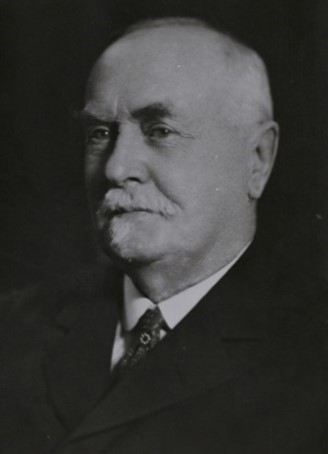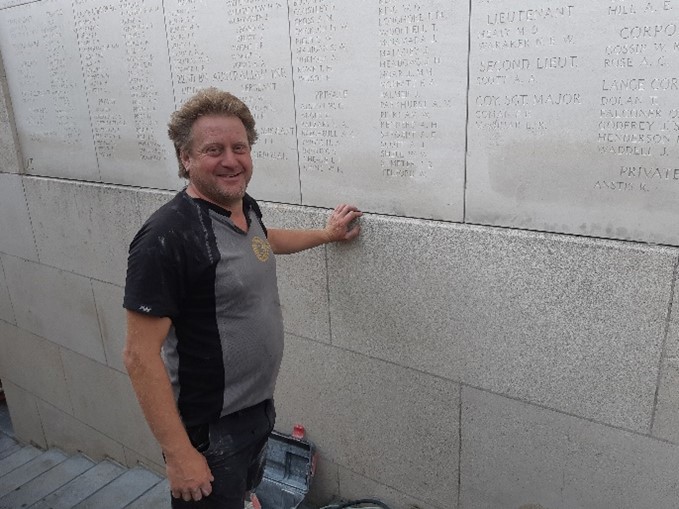27 February 2023
Why and how we’re restoring the Menin Gate
The Ypres (Menin Gate) Memorial, known to many simply as The Menin Gate, is about to get the most comprehensive restoration in its nearly 100-year history.
The Menin Gate
What is the Ypres (Menin Gate) Memorial?

The Ypres (Menin Gate) Memorial in pride of place in Ypres town centre.
The Menin Gate is one of our most iconic memorials to the missing, standing proudly over one of the key routes Allied troops took to reach the battlefields of the Ypres Salient during World War One.
The city of Ypres and its infamous ‘salient’ was the scene of some of the war’s bloodiest battles. No less than four major battles were fought in the countryside around the city, including the huge five-month clash, the Third Battle of Ypres in 1917 - known to many now by the name of one of the final villages to be captured: Passchendaele.
Ypres was an important strategic prize, with its road and rail links and it stood in the way of the German Army’s advance towards the Channel ports in 1914. As the war progressed the town maintained this crucial strategic position and took on a more sentimental status as the last town in Belgium not to have fallen into German hands.
Hundreds of thousands of men fought on Ypres’ battlefields. By 1918, more than 200,000 British Imperial, Belgian, and French troops had died in the defence of Ypres.
To mark their enormous sacrifice, Ypres was chosen to host a spectacular memorial dedicated to commemorating those who fell fighting in the Ypres Salient but who have no known grave.
Who is commemorated on the Menin Gate?

Over 54,000 Commonwealth soldiers are commemorated by the Ypres (Menin Gate) Memorial.
Who is commemorated on the Menin Gate?
Over 54,000 men from around the Commonwealth are commemorated on the Menin Gate’s name panels. The panels adorn the central Hall to the Missing, one of the memorial’s key features.
Men from the forces of Australia, India, Canada, South Africa, and the United Kingdom are commemorated by the Menin Gate. These men came from more than 20 different nations to serve.
Although troops from New Zealand fought across the Ypres battlefields, the government of New Zealand elected to commemorate its missing on memorials in cemeteries near where they died.

Who designed the Menin Gate?
The Ypres (Menin Gate) Memorial was designed by one of the Commission’s principal architects, Sir Reginald Blomfield.
Blomfield was inspired by the form of historic triumphal arches, such as those built by the Romans or the Arc D’Triomphe in Paris, as well as the seventeenth-century style of the Porte de la Citadelle in Nancy, France.
Several lion sculptures adorn the Menin Gate. These were provided by Scottish sculptor Sir William Reid Dick. While lions are one of the heraldic devices of the UK, they are also a symbol of Flanders, the region in which Ypres sits.
When was the Menin Gate unveiled?

The 1927 unveiling of the Menin Gate was attended by a crowd of thousands.
Thousands of veterans, their family members, and citizens of Ypres descended on the Menin Gate to attend its unveiling on Sunday 24th July 1927.
Field Marshal Lord Plumer, who had commanded the troops at Ypres for much of the war, led ceremonies, capping his speech with the immortal lines: “Now it can be said of each one in whose honour we are assembled here to today ‘He is not missing: he is here!”’
Buglers from the Somerset Light Infantry sounded the Last Post as part of the ceremony’s denouement. This soon grew into a nightly tradition.
Almost every day since then, the sound of the Last Post can be heard beneath the Menin Gate in testament to the sacrifice of those commemorated on the panels of the Memorial.
Restoring the Menin Gate
Our memorials are not static objects. They are living memorials to the missing that require careful monitoring and maintenance. Sometimes new names must be added, or names removed if missing casualties are discovered and identified.

From time to time, our major memorials require extensive conservation work to maintain them and to bring them back to their original glory.
The Menin Gate has stood for over 90 years. While the original stone and brickwork remain impressive, no structure, however strong, is free from the effects of the elements.
It has had to withstand the effects of wind, rain, snow, and hot summers, as well as being exposed to pollution.
Since 1927, our staff have taken great pride in looking after the Memorial.
It’s all about long-term preservation. We want to ensure that the gate continues its role for another 100 years so that the sacrifice of the men it commemorates is never forgotten, and therefore, the Menin Gate will undergo a full-scale restoration.
How will we be restoring the Menin Gate?
This is a major, complex, challenging project.
Don’t worry! The Menin Gate is in good hands. We’re taking the same approach we used when we undertook a major conservation project on the Thiepval Memorial to the Missing of the Somme which was completed in 2022.
Sustainability will be at the heart of the Menin Gate’s restoration. We will ensure we restore the memorial using environmentally friendly techniques and practices, as well as boosting its environmental credentials for the future.
The bulk of the work will be conducted on-site in Ypres, reducing material transportation, and we’ll be re-using as much of the original material as possible. The plan is to restore, not replace, wherever possible.
What work will be done?
Several important areas will be tackled during the restoration project:
- Brickwork – Repointing and cleaning of the memorial’s brickwork facades is a top priority. We’ll be replacing or repairing missing and damaged bricks too, as required
- Stonework – Masonry will be thoroughly cleaned and restored, including the decorative lions and sarcophagus
- The roof – Roof repairs will be undertaken as well as extensive waterproofing to protect the memorial’s interior
- Eco-roof – We’re installing a new green-eco roof that will improve waterproofing while promoting biodiversity and ecology
- Ceilings – The memorial’s internal ceilings will get a new lick of paint after extensive preparations removing the current asbestos-filled layers
- Name panel restoration – The memorials’ name panels will be assessed by stonemasons with restorations happening as necessary
- New lighting – Modern energy-efficient lighting will be installed, helping us reduce energy consumption and maintenance costs
- Internal repairs – Significant internal restoration is planned, including work on the concrete foundations and internal staircases
- Other details – Features, such as metal balustrades and handrails, will be cleaned and restored
As you can see, this will be a huge but massively worthwhile undertaking!
Where can you learn more about the Menin Gate restoration project?
Head over to our Menin Gate restoration hub for the latest updates and FAQs on the project.
You can also visit the Commonwealth War Graves Information Centre in Ieper in person to learn more, as well as search for names in our digital recreation of the memorial.

